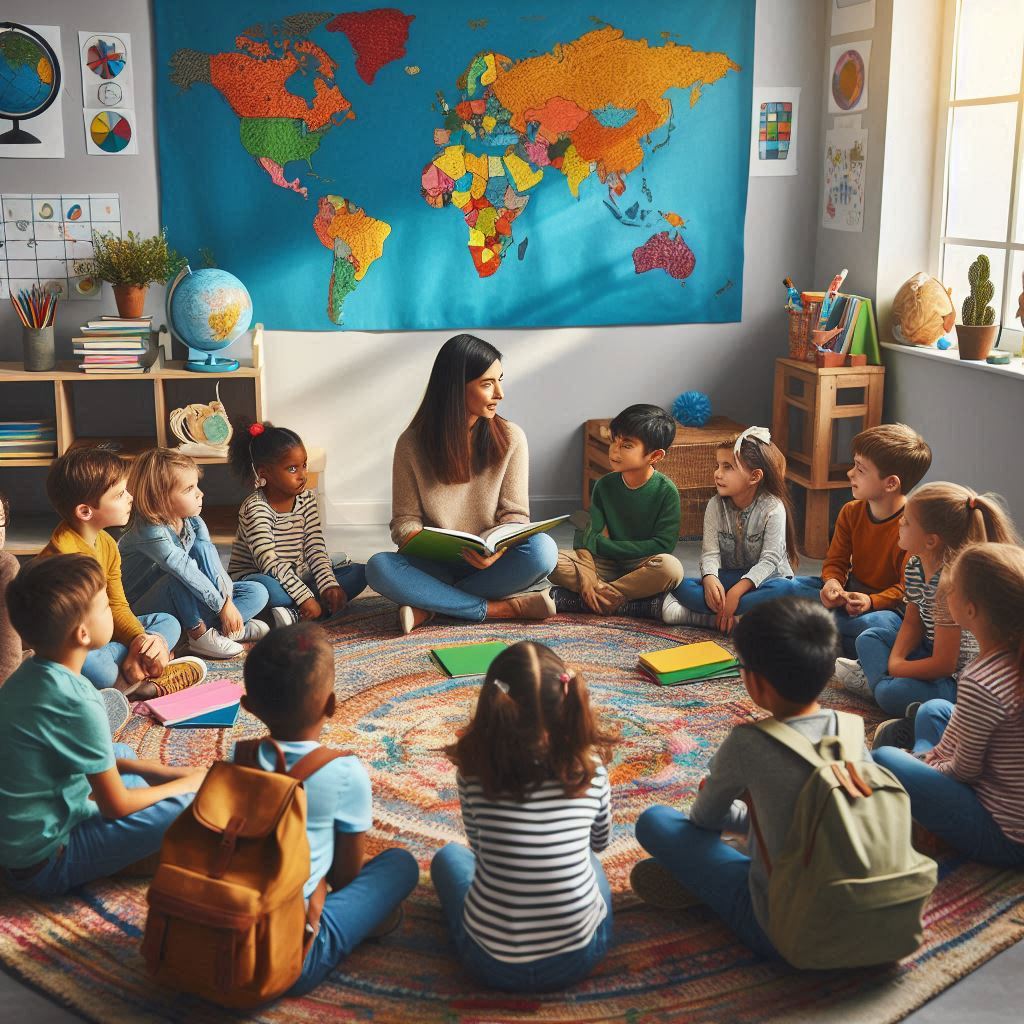Introduction
Poverty is a harsh reality faced by millions worldwide, and its impact on education is profound. Imagine a child eager to learn but hindered by the lack of resources, inadequate school facilities, and the constant worry of financial instability at home. The connection between poverty and education isn’t just an academic topic; it’s a crucial issue that affects the future of individuals, communities, and entire nations.
In this article, we’ll explore how poverty influences education, the challenges students face, and what can be done to break this cycle. Whether you’re new to this topic or seeking a deeper understanding, this guide will provide insights into the profound effects of poverty on education and the steps needed to create positive change.
Understanding Poverty
What is Poverty?
It’s a condition where basic needs such as food, shelter, healthcare, and education are not met. Living in poverty means struggling to make ends meet, often leading to difficult choices that no one should have to make, like choosing between buying food or paying for school supplies.
Causes of Poverty
Poverty can arise from various factors, including unemployment, low wages, lack of access to education, and systemic inequalities. It’s a complex issue that often perpetuates itself through a cycle, making it difficult for individuals to escape without intervention.
The Cycle of Poverty
The cycle of poverty refers to the self-reinforcing mechanisms that cause poverty to persist. For instance, lack of education can lead to low-paying jobs, which in turn makes it difficult to afford quality education for the next generation. Breaking this cycle is essential for creating opportunities for future generations.
Education as a Pathway Out of Poverty

Access to Education in Impoverished Areas
Unfortunately, access to education is not equal across all communities. In impoverished areas, schools may be underfunded, teachers may be scarce, and students may lack basic supplies like books and uniforms. These barriers make it challenging for children in poverty to receive the education they need.
Importance of Early Childhood Education
Early childhood education is particularly important because it sets the foundation for lifelong learning. For children in poverty, quality early education can be a game-changer, helping them develop the skills they need to succeed in school and beyond.
Challenges Faced by Students in Poverty
Lack of Resources
Students in poverty often lack the resources that their more affluent peers take for granted. This includes everything from textbooks and school supplies to access to computers and the internet. Without these tools, it’s hard for students to keep up with their studies.
Poor School Infrastructure
In many impoverished areas, school buildings are in disrepair, classrooms are overcrowded, and essential facilities like libraries and science labs are nonexistent.
Limited Access to Quality Teachers
Teachers are the backbone of any education system, but in low-income areas, attracting and retaining quality teachers can be a challenge. Without skilled educators, students may not receive the instruction they need to excel.
Effects of Poverty on Academic Performance

Low Academic Achievement
It’s no surprise that students living in poverty often struggle academically. The stress of financial insecurity, coupled with a lack of resources, can lead to lower grades and a reduced likelihood of completing their education.
Higher Dropout Rates
The pressure to support their families financially may force some students to drop out of school early. High dropout rates are a common issue in impoverished communities, further perpetuating the cycle of poverty.
Impact on Mental Health
The stress and anxiety associated with poverty can take a toll on students’ mental health. This, in turn, can affect their ability to concentrate, retain information, and perform well in school.
Social and Emotional Impact
Stigma and Bullying
Students from low-income families may face stigma and bullying from their peers. This can create a hostile learning environment, further hindering their academic success.
Emotional Stress and Anxiety
Living in poverty often means dealing with constant uncertainty and stress. This emotional burden can lead to anxiety, depression, and other mental health issues, making it even more difficult for students to focus on their education.
Peer Pressure and Societal Expectations
In some communities, societal expectations and peer pressure can push students to prioritize work over school, leading them to drop out or underperform academically.
Barriers to Higher Education

Financial Constraints
The cost of higher education can be prohibitively expensive for students in poverty. Even with scholarships and financial aid, the burden of tuition, books, and living expenses can be overwhelming.
Lack of Guidance and Mentorship
Many students in poverty lack the guidance and mentorship needed to navigate the complexities of higher education. Without role models or support systems, they may struggle to apply for college, secure financial aid, or choose the right career path.
Difficulty in Accessing Scholarships and Financial Aid
While scholarships and financial aid can make higher education more accessible, students in poverty often face challenges in accessing these resources. They may lack the information or support needed to apply, or they may be discouraged by the competitive nature of scholarship programs.
Government Initiatives and Policies
Programs Aimed at Reducing Educational Inequality
Governments around the world have implemented various programs to reduce educational inequality. These include providing free or subsidized education, offering financial aid to low-income students, and investing in school infrastructure in impoverished areas.
The Role of Subsidies and Financial Aid
Subsidies and financial aid play a crucial role in making education accessible to students in poverty. By covering tuition costs, providing free textbooks, and offering meal programs, these initiatives help level the playing field for all students.
Success Stories of Government Interventions
There are many success stories of government interventions that have made a significant impact on education in impoverished areas. For example, countries like Finland and South Korea have implemented policies that provide equal access to education, regardless of socioeconomic status, leading to high levels of academic achievement.
Community Support and Involvement
The Importance of Community Centers
Community centers can provide a safe and supportive environment for students in poverty. These centers often offer after-school programs, tutoring, and mentorship, helping students stay on track academically.
Non-Profit Organizations and Their Impact
Non-profit organizations play a vital role in supporting education in impoverished communities. From providing school supplies to funding scholarships, these organizations help bridge the gap between what the government can provide and what students need.
Volunteering and Mentorship Programs
Volunteering and mentorship programs can make a significant difference in the lives of students in poverty. By offering their time and expertise, volunteers can provide the guidance and support that these students may not receive at home.
The Roles of Technologies in Bridging the Gap

E-Learning and Its Benefits for Impoverished Students
Technology has the potential to revolutionize education, especially for students in poverty. E-learning platforms can provide access to quality education regardless of location, offering courses, tutorials, and resources that might not be available in local schools.
Challenges of Implementing Technology in Low-Income Areas
While technology offers many benefits, implementing it in low-income areas can be challenging. Issues like lack of internet access, outdated equipment, and insufficient training for teachers can hinder the effectiveness of e-learning initiatives.
Success Stories of Tech Initiatives
Despite the challenges, there have been successful tech initiatives in impoverished areas. For example, the One Laptop per Child project has provided affordable laptops to students in developing countries, giving them access to digital resources and learning opportunities.
Case Studies
Success Stories of Individuals Who Overcame Poverty Through Education
There are countless inspiring stories of individuals who have overcome poverty through education. These success stories highlight the transformative power of education and the importance of providing opportunities for all students.
Schools That Have Successfully Implemented Poverty-Alleviation Programs
Some schools have successfully implemented programs aimed at alleviating poverty and improving educational outcomes. These schools serve as models for how education can be a powerful tool for social change.
Lessons Learned from Different Countries
Different countries have taken various approaches to addressing the impact of poverty on education. By examining these approaches, we can learn valuable lessons about what works and what doesn’t.
The Global Perspective
How Poverty and Education Are Linked Worldwide
Poverty and education are inextricably linked on a global scale. In many parts of the world, lack of access to education perpetuates poverty, while poverty prevents access to education. This vicious cycle affects millions of children and young people, particularly in developing countries.
International Efforts to Address the Issue
International organizations, such as UNICEF and UNESCO, have launched various initiatives to address the impact of poverty on education. These efforts aim to provide access to quality education for all children, regardless of their socioeconomic background.
The Impact of Global Economic Policies
Global economic policies can have a significant impact on education and poverty. For example, policies that promote economic growth and reduce inequality can create more opportunities for education, while policies that exacerbate poverty can hinder educational progress.
What Can Be Done?
Policy Recommendations
To address the impact of poverty on education, policymakers must prioritize investment in education, particularly in impoverished areas. This includes funding for schools, teacher training, and financial aid for low-income students.
The Role of the Private Sector
The private sector can play a crucial role in supporting education for students in poverty. Companies can provide funding for scholarships, donate resources to schools, and create internship and job opportunities for low-income students.
Community-Driven Solutions
Communities themselves can be powerful agents of change. By coming together to support local schools, provide mentorship, and advocate for policy changes, communities can help ensure that all children have access to a quality education.
The Future of Education and Poverty
Predictions and Trends
The future of education and poverty is uncertain, but there are reasons to be hopeful. Ongoing initiatives, technological advancements, and a growing awareness of the issue are all contributing to positive change.
The Potential Impact of Ongoing Initiatives
Many ongoing initiatives have the potential to make a significant impact on education and poverty. From government programs to community-driven efforts, these initiatives are helping to create a brighter future for students in poverty.
The Importance’s of Continued Focus’s on This Issues
While progress is being made, it’s essential to continue focusing on the impact of poverty on education. By keeping this issue at the forefront of policy discussions and public awareness, we can ensure that future generations have the opportunities they need to succeed.
Conclusion
The impact of poverty on education is a complex and multifaceted issue, but it’s one that we can address with collective effort. From government policies to community-driven solutions, there are many ways to support students in poverty and help them achieve their full potential.
FAQs
- How does poverty specifically affect a child’s education?
Poverty affects a child’s education by limiting access to resources, quality teachers, and stable learning environments. It can also lead to emotional stress and lower academic performance. - What are some ways to help students living in poverty?
Providing financial aid, mentorship, and access to quality education are key ways to support students living in poverty. Community involvement and government programs can also make a significant impact. - Can education alone break the cycle of poverty?
Education is a powerful tool, but it must be combined with other support systems, such as economic opportunities and social services, to effectively break the cycle of poverty. - How can technology help students in impoverished areas?
Technology can provide access to educational resources, online courses, and e-learning platforms, helping students in impoverished areas overcome barriers to education. - What role can communities play in supporting education for impoverished students?
Communities can support education by volunteering, mentoring, and advocating for policy changes. Community centers and local organizations can also provide essential resources and support.


